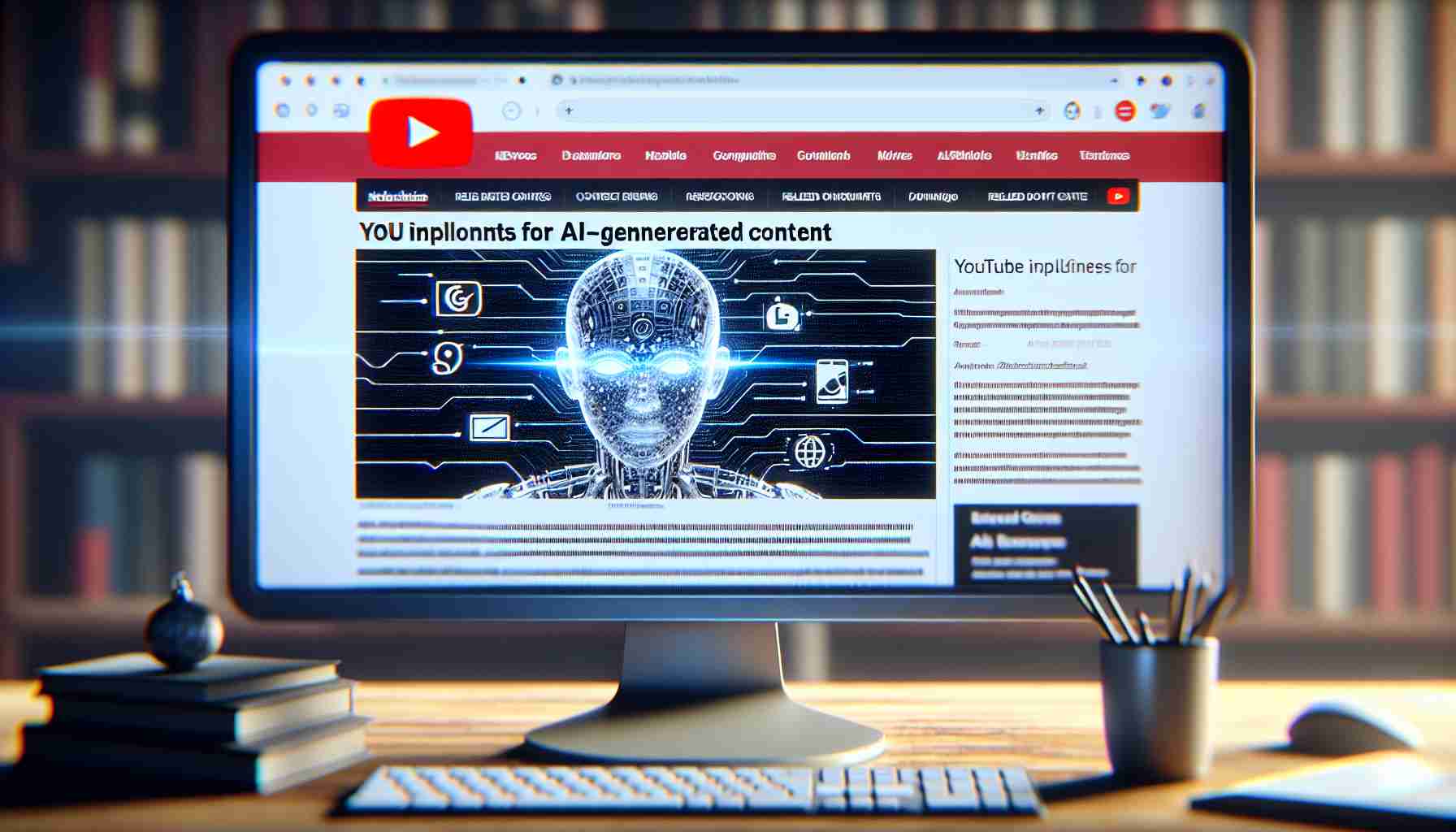YouTube recently announced that it is introducing new guidelines for content creators regarding AI-generated content. These guidelines require creators to prominently label any synthetically created parts of their videos. The primary goal of these guidelines is to combat the spread of misinformation and increase transparency for viewers.
The new guidelines specify that creators must disclose when realistic content is made with altered or synthetic media, including generative AI. This includes digitally altering content, such as replacing the face of one individual with another, or synthetically generating a person’s voice to narrate a video. It also includes altering footage of real events or places and showing a realistic depiction of fictional major events.
To ensure transparency and build trust with viewers, disclosure labels will be clearly shown within the video player itself or in the expanded video description. However, there are exemptions from disclosure requirements. Content creators are not required to disclose if generative AI was used for productivity purposes, such as generating scripts, content ideas, or automatic captions. Additionally, creators are not obligated to disclose when synthetic media is unrealistic and the changes are inconsequential, such as in cases of animation or special effects.
In most cases, a label will appear in the expanded video description. However, for videos that cover sensitive topics like health, news, elections, or finance, YouTube will display a more prominent label directly on the video itself.
These new guidelines aim to promote transparency and trust in the content viewers consume on YouTube. It is a step forward in the ongoing efforts to combat the spread of misinformation and ensure that viewers are aware of how AI-generated content may be utilized within videos.
FAQ
What is AI-generated content?
AI-generated content refers to any content that is created using artificial intelligence techniques. This can include synthesizing images, generating voices, altering videos, and more.
Why is labelling AI-generated content important?
Labelling AI-generated content is important as it provides transparency to viewers. By disclosing the use of AI, viewers can better understand how certain elements of a video were created and distinguish them from reality.
Are there any exemptions from the disclosure requirements?
Yes, there are exemptions from the disclosure requirements. Content creators do not need to disclose if generative AI was used for productivity purposes, such as generating scripts or content ideas. Additionally, they are not required to disclose when synthetic media is unrealistic and the changes are inconsequential, such as in cases of animation and special effects.
Sources:
– YouTube: https://www.youtube.com
The introduction of new guidelines for AI-generated content by YouTube reflects the growing impact of artificial intelligence in the media and entertainment industry. The use of AI in content creation has seen significant advancements in recent years, allowing creators to generate realistic images, videos, and voices. This technology has the potential to revolutionize the industry by enabling new forms of creative expression and enhancing the overall viewer experience.
The market for AI-generated content is expected to witness substantial growth in the coming years. According to a report by MarketsandMarkets, the AI in the media and entertainment market is projected to reach $4.5 billion by 2025, growing at a CAGR of 22.2% during the forecast period. The increasing adoption of AI technologies in video editing, virtual reality, and personalized content recommendations is driving the demand for AI-generated content.
However, along with the opportunities, there are also challenges and concerns related to AI-generated content. One major issue is the potential for misuse and the spread of misinformation. As AI technology becomes more sophisticated, there is a risk of creating deepfakes – manipulated videos or images that can be difficult to distinguish from reality. This poses a threat to the credibility of online content and can have serious implications in various domains, including politics, journalism, and entertainment.
In response to these challenges, platforms like YouTube are implementing guidelines to address the responsible use of AI-generated content. By requiring creators to disclose the use of synthetic media, YouTube aims to mitigate the risks of misinformation and ensure transparency for viewers. These guidelines are part of a broader industry-wide effort to develop standards and best practices for AI-generated content.
As AI continues to advance, it is crucial for both content creators and platforms to stay vigilant and adapt to the evolving landscape. Balancing innovation with responsible practices will be essential in harnessing the full potential of AI while maintaining trust and integrity in the media and entertainment industry.
Sources:
– MarketsandMarkets report: https://www.marketsandmarkets.com/Market-Reports/ai-in-media-entertainment-market-168655895.html
The source of the article is from the blog papodemusica.com

